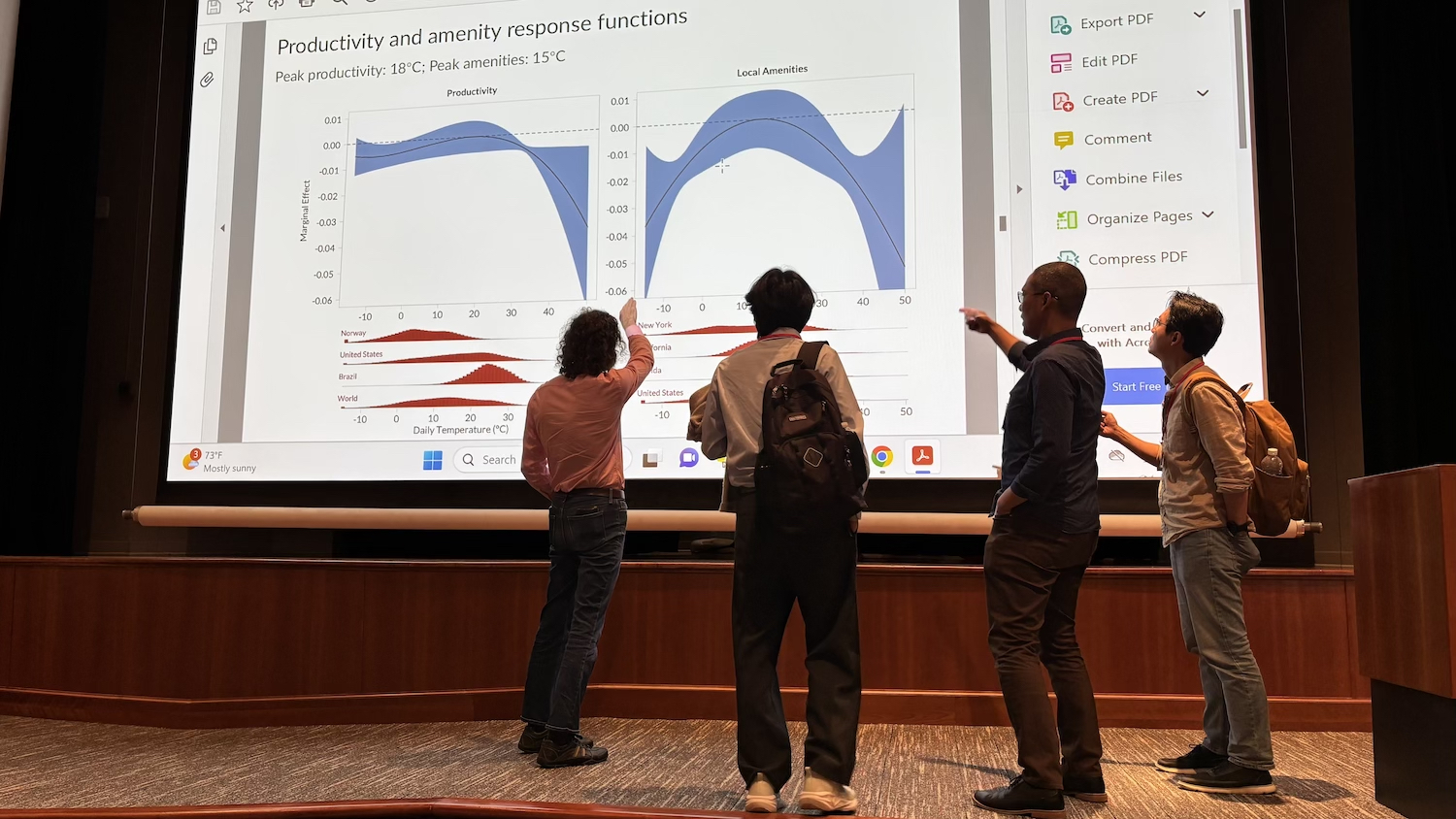Study Finds Racial Disparities in Labor and Delivery
Black women are more likely to undergo unscheduled C-sections, according to Poole College research that’s generated significant media attention.

When pregnant black women go into labor unexpectedly, they’re 25 percent more likely than white women to deliver via cesarean section, according to a working paper co-authored by Adriana Corredor-Waldron, assistant professor of economics.
Between 2008 and 2017, 21 percent of Black women who had unscheduled deliveries in New Jersey got C-sections, according to “Drivers of Racial Differences In C-Sections,” a National Bureau of Economic Research working paper Corredor-Waldron penned with colleagues from Princeton University and Northwestern University. During the same period and under the same circumstances, 17 percent of white women delivered via C-section.
That disparity narrowed slightly when the researchers controlled for observed medical risk factors, sociodemographic characteristics, hospital, and doctor or medical practice group. It disappeared entirely when Corredor-Waldron and her peers adjusted for availability of facilities—when scheduled C-sections were occurring at a given hospital, the racial gap in unscheduled C-sections between Black and white dropped to nearly zero.

That finding in particular adds to existing scholarship, Corredor-Waldron said, indicating that the disparity has more to do with a provider’s preferences than an individual mother’s needs.
“What we show is that it’s not likely this disparity is coming from something the physician is seeing that we—the researchers—are not seeing in the medical records,” Corredor-Waldron said. “Because if Black mothers were truly better candidates for these unscheduled C-sections, we should see the gap persist, whether the operating rooms are busy or not.”
The paper, which has been covered by The New York Times, CBS News, and other media outlets, explored nearly 1 million births at 68 New Jersey hospitals. Corredor-Waldron recently discussed her findings, her interest in investigating health disparities, and possible solutions:
What made this problem an interesting one for you as a researcher?
I am interested in understanding health disparities. Sometimes, the same policy consistently has different effects on black and white individuals, and it’s interesting to think about that beyond the aggregate, because aggregation masks a lot of heterogeneity and differences between populations.
Usually, when you start talking about racial disparities in C-section, one of the first things that will come to mind is differences in maternal risk factors. Maybe that’s why we see that black women are more likely to have a C-section. Or it’s because of insurance differences and whether they have Medicaid or private insurance. But because of the rich data that we had, we could rule out many of the things that people identify, and we still get the same results. It’s a very interesting problem to think about.
New Jersey is a state with high C-section rates, even compared with the average U.S. state. Our first question was about where this high rate was coming from. And then we started realizing there was a significant difference between races. We ended up focusing only on unscheduled deliveries, because with unscheduled deliveries there is less of a problem of people suggesting that this might be coming just from mother’s preference. With unscheduled C-sections, everyone arrived at the hospital and had a trial of labor. So the C-section was something that was not planned and happened after the mother arrived.
I think it’s important to mention that previous literature has shown that this disparity exists not only in New Jersey, but in the entire United States. But we were able to rule out many of the drivers that others couldn’t because of data limitations.
Are C-sections themselves a problem?
No. C-sections for high-risk mothers can save lives. So we’re not saying that C-sections should be decreased across the board.
We want to stress that we’re talking about unscheduled deliveries. We’re talking about low-risk mothers getting C-sections. We need to target better when it comes to low-risk women.
Do you have a sense of what might help to close this gap between black and white mothers’ experiences?
We don’t have the data to go into detail on exactly what it is, whether it’s lack of patience, for example, or if it’s cultural misunderstandings between a physician and a person from a different race. We don’t have good data to answer that.
What we can say, because we’ve talked with some ob-gyns, is that they think about things like perceived risk. We’re all reading the (Centers for Disease Control reports) about high infant mortality among black infants. It might be that the physician thinks, “I don’t want any complications. So I’m just going to go ahead and do an emergency C-section.”
This paper has gotten a lot of media attention. What kind of impact do you hope it has?
The type of research that I do is mainly about public policy and how it shapes healthcare provision or changes provider behavior. So my hope is that either a particular paper can open the debate or contribute to a debate that has been going on. I do hope that my research can help inform policymakers.
We are meeting with a nonprofit institution in New Jersey, and they work with hospitals there. Legislation may take time, a lot of time. But if we’re also able to show these results to hospitals themselves, that’s a positive thing that comes from this paper.
Are there other aspects of the childbirth experience you’re interested in exploring?
I’d like to look at the future pregnancies for these individuals. Because once you are given a C-section, it’s like you’re gonna have a very different risk profile for your following pregnancies. One C-section often means all C-sections from there on out.
In this study, we only looked at the 90 days after the delivery, but it would be very, very nice to see what happened the following 10 years. What happened with their childbirth experience during their reproductive ages. That would be a very big project. We show the short-run effects on health in this paper, But \what are the long-run effects now that we completely changed your risk profile?


